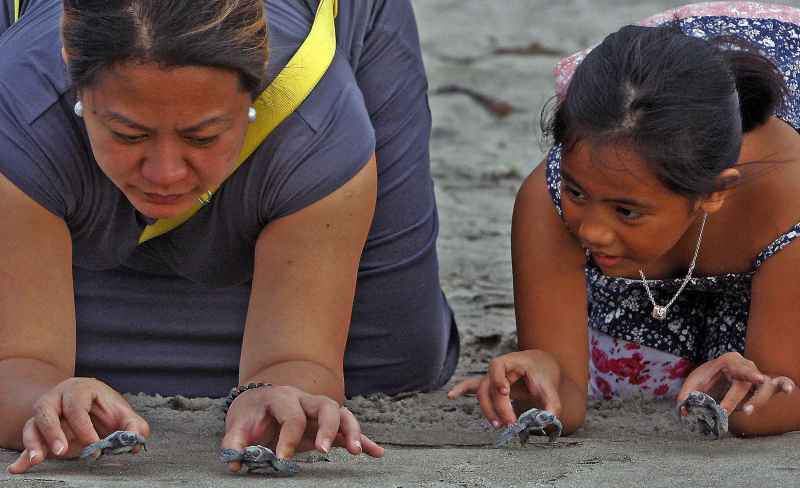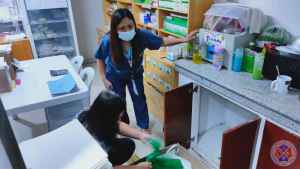‘Sea Turtle Nesting In La Union Reaching All Time High During Pandemic’

BAGUIO CITY (February 22, 2021) – Nesting of the near-extinct Olive Ridley sea turtles in La Union have reached an all-time high.
Conservation group Coastal Underwater Resource Management Actions(CURMA) coordinator Carlos Tamayo is even anticipating most number of hatchlings this season (October-March). It might even double with already 4,606 already hatched and released to the sea with less than half of the 65 nests to hatch in the coming days, he said.
CURMA is a Science of Identity Foundation (SIF-CARE) assisted pawikan conservation and protection program started by Tamayo’s family several years ago at barangay Ili Norte, San Juan.
What excites Tamayo is, the 65 nests at the hatchery is still growing because Olive Ridley turtle mothers keep on coming at the shores of San Juan all the way to Bacnotan shores to lay their eggs.
“We see 6,500 to over 7,000 hatchlings (at the end of the season this March),” Tamayo said.
Last season, only 38 nests (3,362 hatchlings) were successfully released to the sea.
CURMA’s founder, Carlos’ father Toby, a former professor at the Philippine Military Academy, a veteran environmentalist and an accomplished beekeeper of the famous Tobees Apiary in Baguio City explains, “sea turtles are a keystone specie”. Sea turtles, especially green sea turtles, are one of very few creatures (manatees are another) that eat sea grass. Sea grass needs to be constantly cut short to help it grow across the sea floor. Sea turtle grazing helps maintain the health of the sea grass beds.
Sea grass beds provide breeding and developmental grounds for numerous marine animals. Without sea grass beds, many marine species humans harvest would be lost, as would the lower levels of the food chain. The reactions could result in many more marine species eventually becoming endangered or extinct.
Sea turtles feed on jellyfish. If they become extinct, the deadly jelly fishes will multiply exponentially.
Sea turtles come back to where they were freed 25 years after to lay their own eggs.
In 2017, CURMA volunteers freed 8,700 young olive ridley hatchlings. In the 2009-2010 laying season, almost 15,000 hatchlings were freed in the sea. The next season, 12,000, then 9,000, then 6,000.
There are 7 species of sea turtles and all, including the olive ridley, are listed on the IUCN Red List as either critically endangered or vulnerable.
According to Tamayo, they are consulting marine biologists to shed light why there seems to be a tremendous hike in the nesting. Though he himself suspect, “most likely (the cause is) tahimik at madilim ang beaches” ngayong Covid19 times”.
Mother Olive Ridley turtles lay their eggs on dimly-lit and undisturbed shores.
Marine biologists are also checking weather and wave patters that may have contributed to the hike in the number of nests this season, Tamayo said.
At the birth of the conservation program, local fisherfolk seemed were stumbling blocks, the younger Tamayo explained. “Olive ridleys were food to them. If not money.” But since the local community has been engaged to become active partners in wildlife conservation through various education campaigns, then poachers are now CURMA volunteers doing beach patrols for nests.
Local fishermen have become partners while lobby work spelled out support from the San Juan local government shelling out P1,500 per-catch-incentive to fishermen who find olive ridley adults at sea or along the beach.
Beach resort owners have also partnered with them to harmonize tourism in the area and looking after the olive ridleys.***Artemio A. Dumlao***
JUST IN
36,000 BENGUET VOTERS ASK COMELEC TO PROCLAIM YAP
June 4, 2025
PANGASINAN COLLEGE TO ACCEPT 700 NEW SCHOLARS
June 2, 2025
YAP EYEING COUNTER CHARGE AFTER 6TH AND 7TH DQ CASES
May 28, 2025






